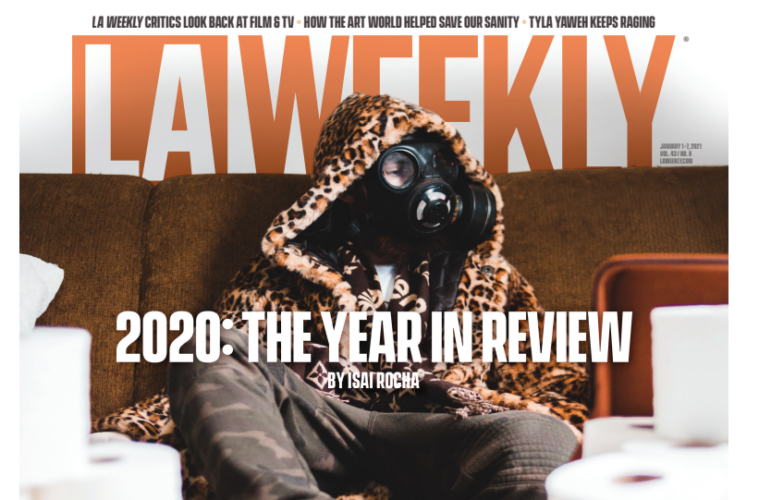This year has been challenging for the city of Los Angeles and the world alike. The COVID-19 pandemic turned our world upside down, taking the lives of hundreds of thousands in the U.S., exhausting our health care system and forcing aspects of our everyday lives to shut down. In the midst of enduring the hardships of a pandemic, Angelenos fought for societal issues, fought to make their voices heard in the political spectrum and even fought historic wildfires that ran wild throughout California. In a year of many unfortunate firsts, we take a look back at the stories that affected Los Angeles the most in 2020.
THE COVID-19 PANDEMIC

(Photo by Anastasiia Chepinska/Unsplash)
After a month of hearing about a deadly virus that rapidly spread throughout China and parts of Europe, the U.S. reported its first case of COVID-19 on February 26.
After the virus began to spread more quickly throughout the country, President Donald Trump declared a state of emergency on March 13, with the country unaware of the potential dangers the invisible virus could bring.
With the guidance of L.A. County Public Health, Mayor Eric Garcetti enacted strict guidelines, asking Los Angeles residents to not attend large group events of over 50. We were introduced to the term “flattening the curve,” which was the goal for reducing the spread of the disease. Days later, President Trump initiated stricter guidelines, asking Americans to not gather in groups of more than 10 people.
As more accurate COVID-19 testing became available in the U.S., Los Angeles organized testing sites throughout the city and made the tests free for all L.A. County residents.
As the number of positive cases began to increase, so did the restrictions ordered not just on a county level, but a statewide level, as well.
All sectors that attracted crowds were shut down, such as theme parks, stadiums and eventually small businesses.
The term “essential business” became commonplace and applied to sectors such as grocery stores, fast food restaurants, care facilities and utility companies.
For weeks, those were the only places opened to the public and even as businesses were allowed to reopen, L.A. County shut down almost all everyday sectors such as indoor dining, personal care businesses, shopping malls and even beaches.
The use of face coverings became a requirement, as Gov. Newsom signed the order after multiple counties faced confusion over mask regulations in public.
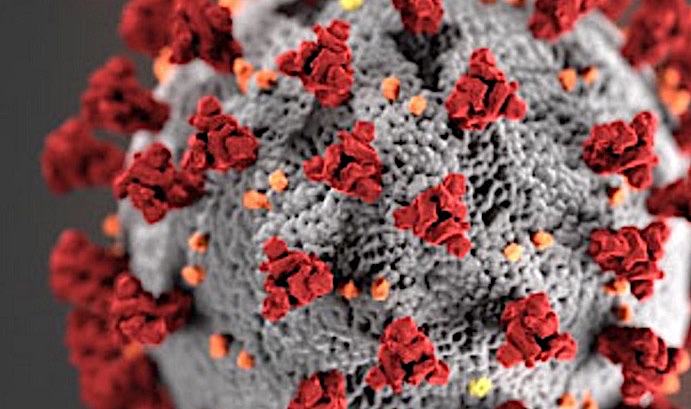
By the fall months, L.A. County began seeing record numbers of daily COVID-19 cases and deaths. For multiple days in early December, more than 100 single-day deaths were reported, and the county reached maximum ICU capacity, as hospitals were being flooded with COVID-19 patients, leading to hours of wait times in emergency rooms.
L.A. Public Health officials correlated the surge in cases to holiday gatherings, just as pharmaceutical companies began to get approval for emergency use of COVID-19 vaccinations.
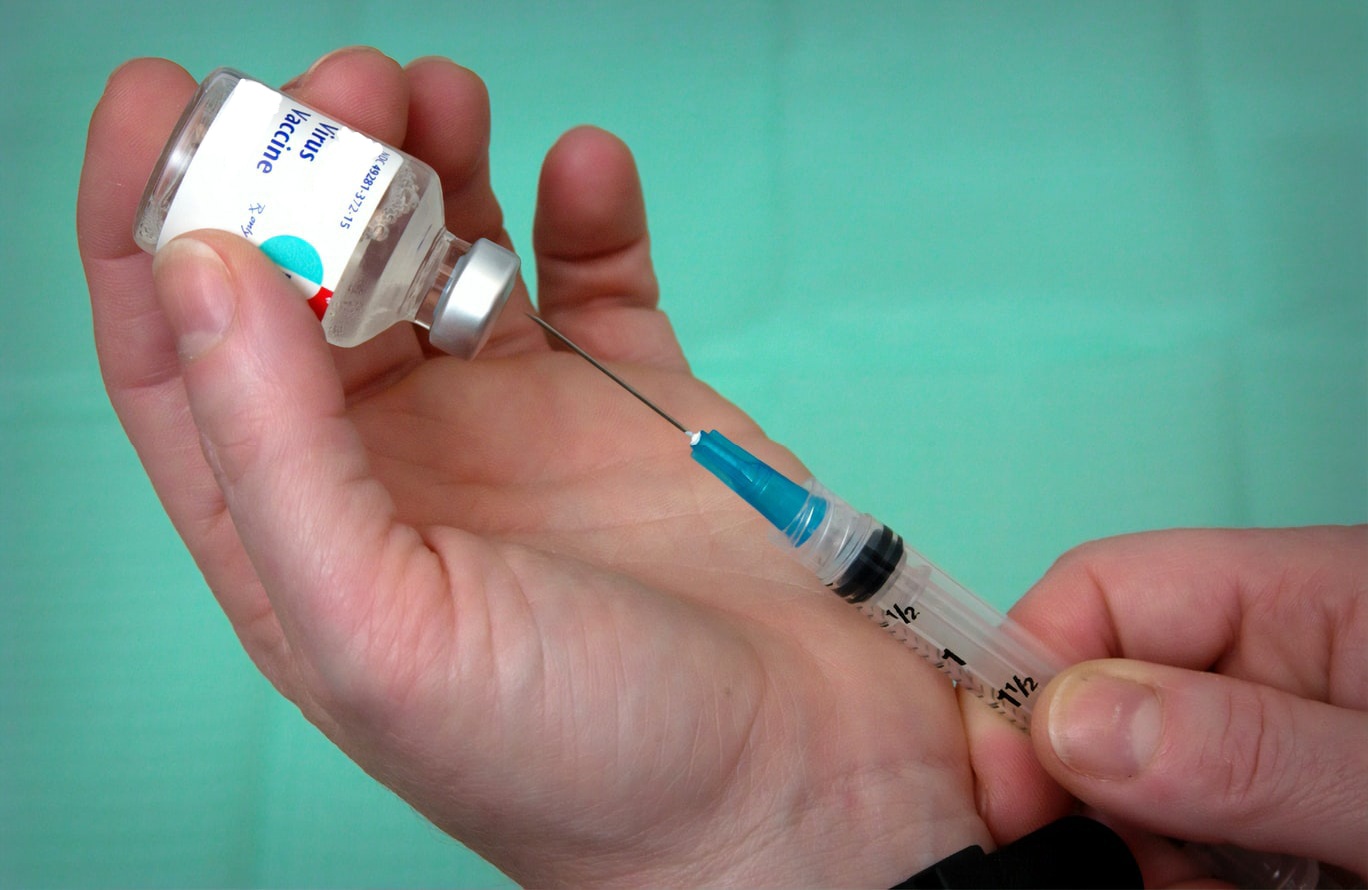
(Photo by CDC)
Both Pfizer and Moderna created vaccines that were 95 percent and 94 percent effective, respectively. The first batches of vaccine doses were distributed to health care workers across the country, including in L.A. County.
“In the new year we will start vaccinating more broadly with a continued focus on equity, using that equity lens,” L.A. County Supervisor Hilda L. Solis said. “Los Angeles County will ensure that vaccines are eventually available in every neighborhood and to all people in Los Angeles, regardless of race, insurance status or ability to pay.”
More than 500,000 vaccine doses were distributed to L.A. County in 2020 and with accelerated production, the county has set a goal to get the vaccines to the general public by Spring 2021. As of this writing, L.A. County recorded 718,510 residents infected with the COVID-19 virus with 9,520 deaths, while the U.S. has recorded more than 19 million positive cases and more than 344,000 deaths.
A YEAR OF PROTESTS
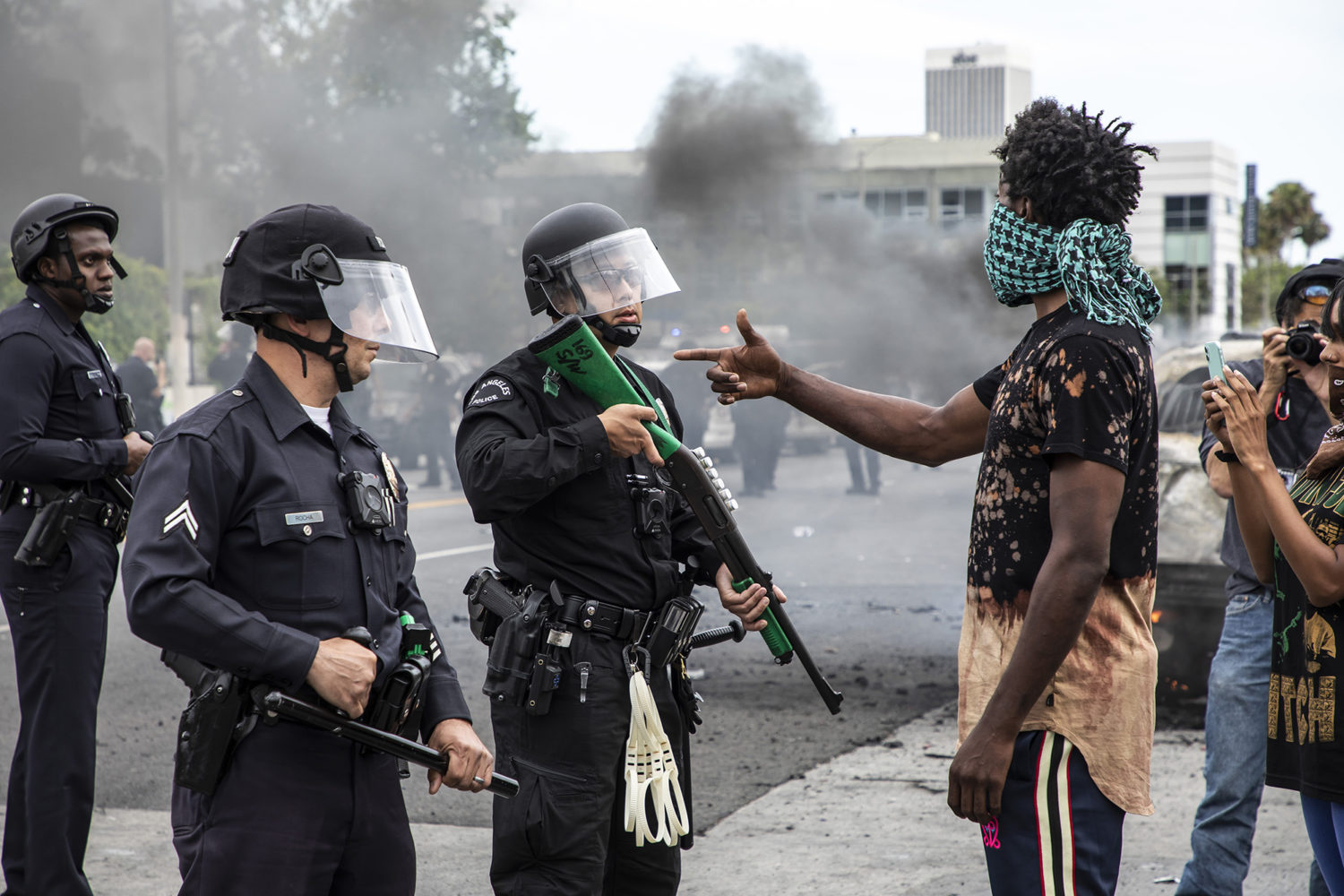
Protesting the death of George Floyd in the Fairfax district of Los Angeles. 5/30/2020
(Photo by Ted Soqui)
GEORGE FLOYD PROTESTS
Cities across the U.S. protested law enforcement’s use of force following the Memorial Day death of George Floyd, a Minneapolis man who was recorded lying unresponsive with Minneapolis PD officer Derek Chauvin’s knee over Floyd’s neck and back, allegedly causing his death.
In a matter of days, Los Angeles experienced a wide spectrum of phases during its protests, from peaceful marches, to looting, to businesses being lit on fire and even countywide curfews.
The Los Angeles-based protests started small on Thursday, May 28, and progressively got larger in size with every passing day. From groups of tens that blocked freeway traffic on the 110 Southbound freeway, to hundreds of thousands who marched the streets of downtown L.A., the death of Floyd sparked a movement against what activists called “police brutality” and attributed it to racism.
“This is about #GeorgeFloyd and about so much more than him. … It’s about the thousands of folks who are killed by police every year, including #KennethRossJr, #WakieshaWilson, #GrecharioMack, #RyanTwyman and #LeeJefferson, whose families were all at the protest,” Melina Abdullah, a co-founder of Black Lives Matter Los Angeles, told L.A. Weekly in a written statement. “This is also about a system of policing that puts targets on the backs of black people, and eats up public funds which could be used for resources and services, like permanent housing, health care, youth programs, parks and libraries.”
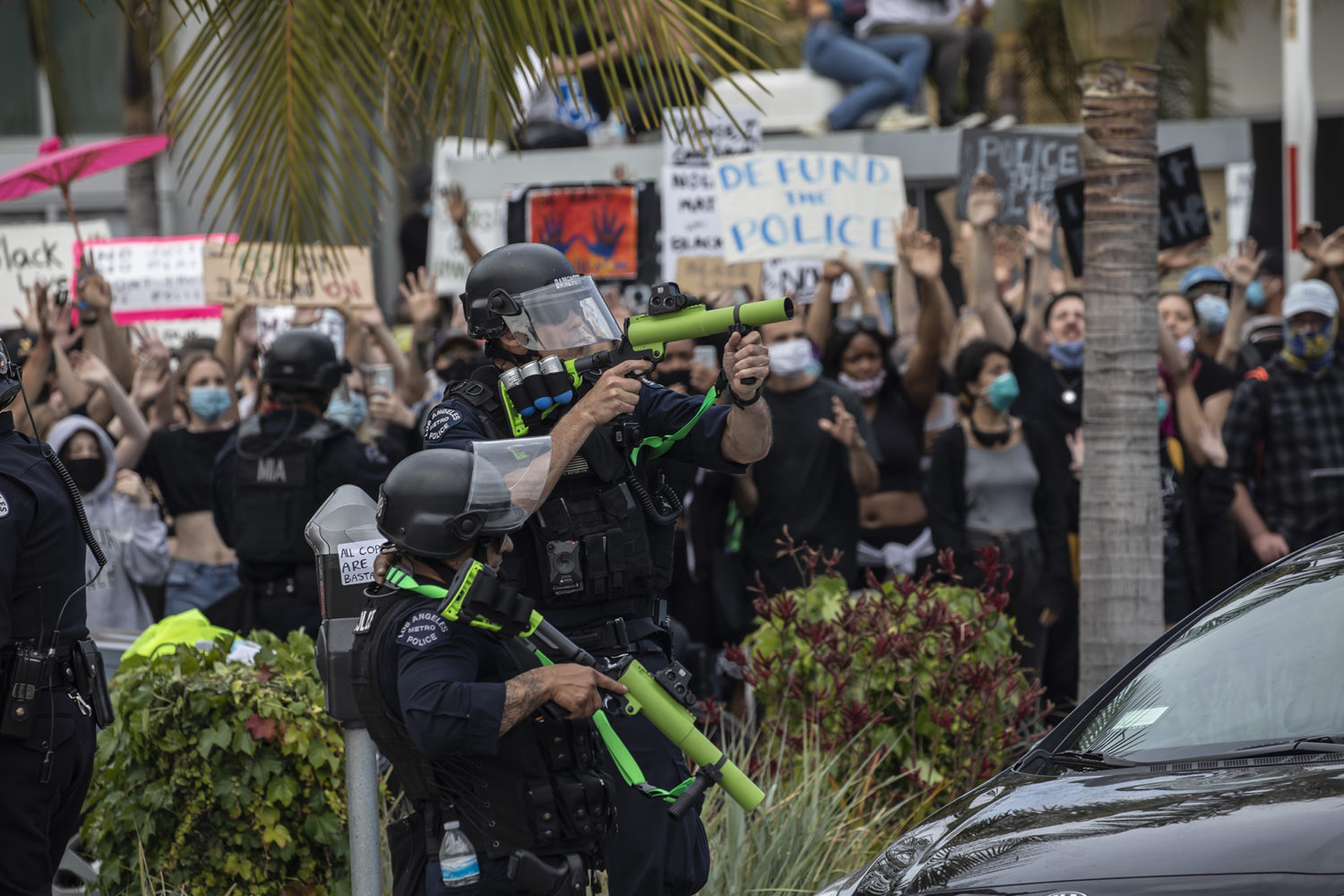
LAPD face off with protesters in the Fairfax district of Los Angeles. 5/30/2020
(Photo by Ted Soqui)
While the first two days of L.A. protests saw few altercations between protesters and law enforcement, Saturday, May 30 was the day that conflict escalated between protesters and police.
On that Saturday, protesters gathered at Pan Pacific Park, for what was said by attendees to be a peaceful rally led by the Black Lives Matter organization.
“I left before things seemed to have gotten really intense, but while I was there it was very emotional and overwhelming to see thousands of people stand in solidarity,” protester Britnee Sweat told L.A. Weekly. “It was a great feeling to have that reassurance that there are so many people who truly believe that black lives do matter.”
Jennifer Gross, who also attended the Fairfax rally, reiterated the peaceful nature, but then said things took a turn.
“Suddenly, the police seemed to square off on 3rd Street, a few blocks west of Fairfax,” said Gross. “All of a sudden this protest march stopped and turned, and the police started shooting rubber bullets into the crowd. How did a police car suddenly go on fire? I have no idea, but when the police showed up — tensions built.”
As far as police vehicles being set on fire, an attendee by the name of Richard told L.A. Weekly he saw a nearby vehicle get vandalized, saying, “Conveniently some decommissioned cop cars were on the side of the road… some instigators lit it on fire.”
Richard continued that the positive feeling he had to start the protest, turned to disappointment, as he watched friends be shot with “less than lethal” bullets, and LAPD yelling out things such as, “Let’s fuck ‘em up.”
As standoffs ensued and angry activists began to damage property around the city, Mayor Eric Garcetti ordered a one-night curfew covering the entire city of Los Angeles from 8 p.m. Saturday to 5:30 a.m. on Sunday, which would be the first of more curfews to come in L.A. County.
Garcetti expressed support of protests, but also said that he could not let them lead to violent and destructive altercations.
“Even if they block streets, they yell, they scream, that’s what creates change in this country,” Garcetti said of the protesters. “But at one point, you’ve got to take the temperature of the crowd, and eventually it starts getting ugly, we’ve got hundreds in this area ready to go in.”
That same night is when Gov. Gavin Newsom declared a state of emergency in Los Angeles, as 2,000 members of the National Guard were deployed to assist law enforcement, despite initially announcing there would be no deployment of National Guard members.
L.A. County Sheriff Alex Villanueva added that most protesters had dispersed by the 8 p.m. curfew, and the only people left were “professional anarchists,” who he believed were the ones setting businesses on fire and initiating looting.
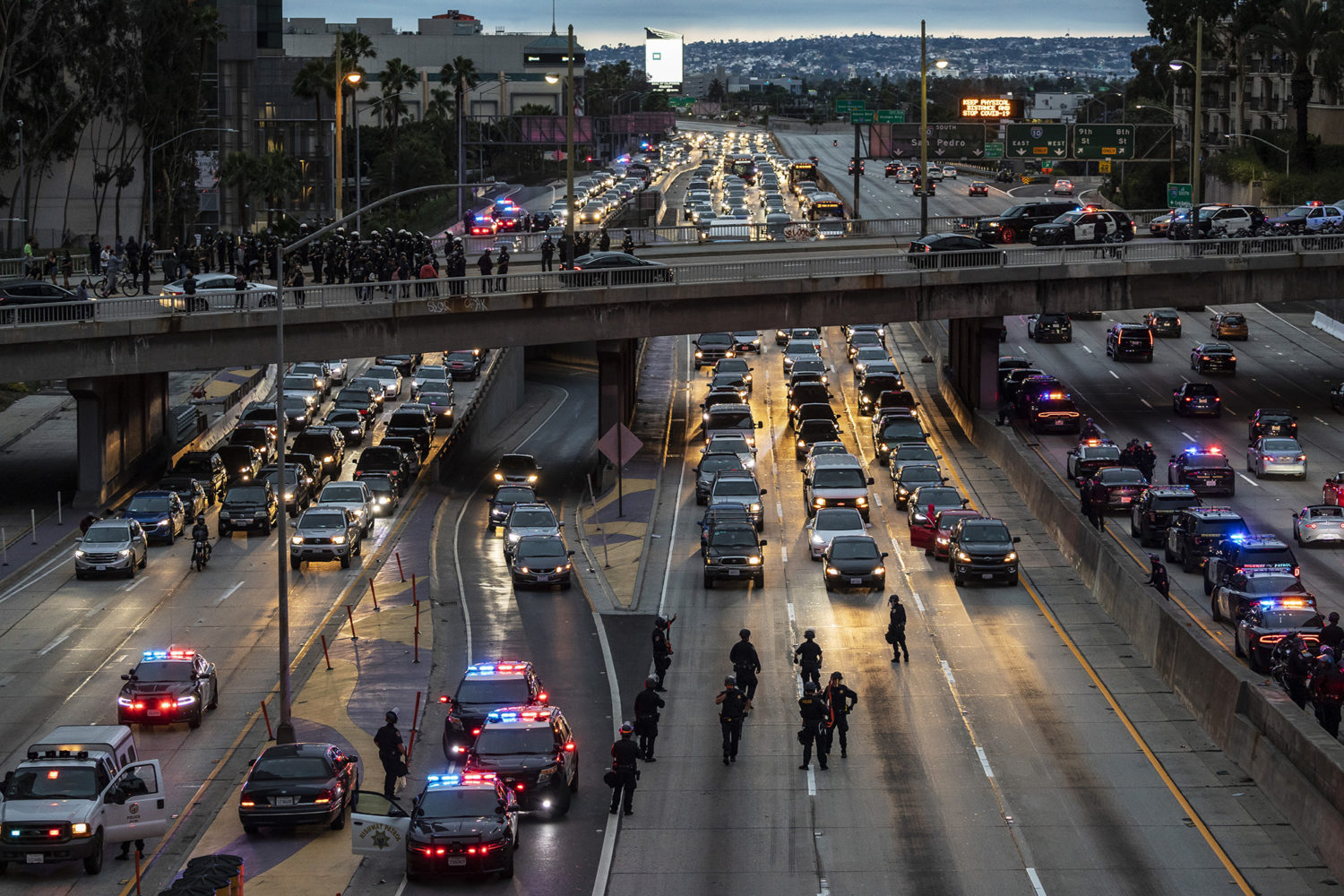
Demonstrators in downtown L.A. take over the 110 freeway. 5/29/2020
(Photo by Ted Soqui)
Both Mayor Garcetti and Gov. Newsom said they believed out-of-town agitators were sent into the city to disrupt the protests, with Garcetti going as far as calling them “organized criminals” and Newsom refusing to give any specific group public acknowledgment.
By Sunday, May 31, protests took a backseat to the amount of looting that was taking place in the county.
While affected areas of downtown Los Angeles and Fairfax were being patrolled by the National Guard, several L.A. cities, most notably Santa Monica, began to see more store looting. In response, Santa Monica implemented a 4 p.m. curfew and saw the National Guard assisting law enforcement, as they arrested 398 people by night’s end.
At several points during the weekend, stand-offs were created between police officers and protesters, as LAPD often shot tear gas and “less than lethal” bullets into the crowds, and protesters countered with “flash bangs,” molotov cocktails, and at times even bricks.
As the protests saw the vandalization of businesses in the Los Angeles area, Mayor Garcetti responded by saying, “This is no longer a protest, this is destruction. Looting, stealing or vandalizing have nothing to do with the protest.”
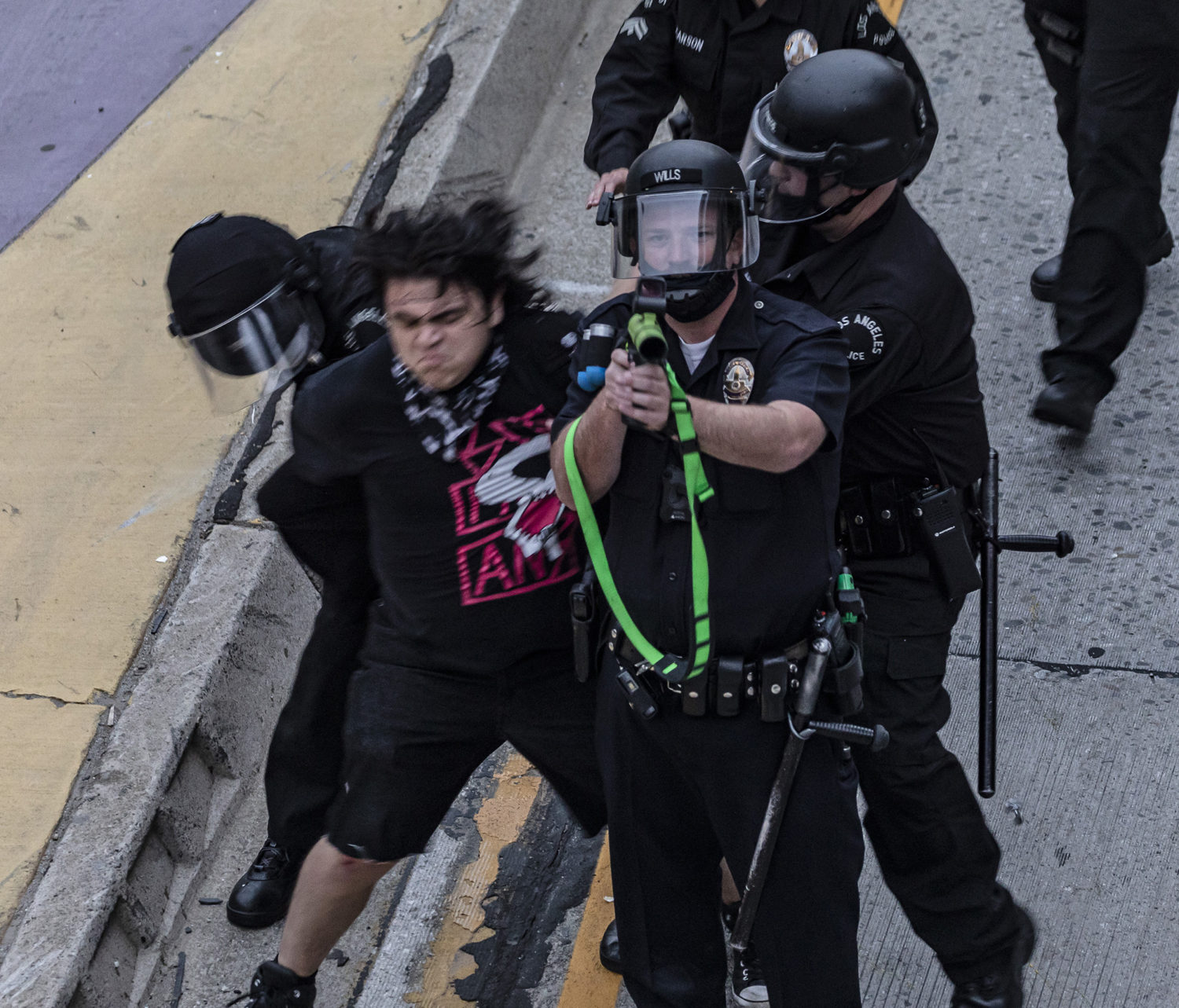
Demonstrators in downtown Los Angeles take over the 110 freeway.
(Photo by Ted Soqui)
President Donald Trump addressed the protests publicly for the first time that following Monday, June 1, stating that he would mobilize military forces across the country, dispatching thousands to “stop the rioting, looting, vandalism, assaults and destruction of property.”
“We cannot allow the righteous cries of peaceful protesters to be drowned out by an angry mob,” Trump said Monday.
Over 1,200 arrests were made in Los Angeles County during the weekend curfews, and the protests have continued in several cities across the U.S., all in the midst of a global pandemic where Americans have been advised to wear face coverings and stay away from large gatherings for more than two months.
“I could put together a group of advisers. I could put together another task force. I could promise and promote a few pieces of legislation, but program passing is not problem solving,” Gov. Newsom said. “You got to change hearts, you got to change culture, not just laws.”
Chauvin was charged with second-degree murder, third-degree murder and third-degree manslaughter, but was released from jail on a $1 million non-cash bond in October.
BREONNA TAYLOR PROTESTS
Almost four months after the Floyd protests began, Angelenos took to the streets again on September 25 after Kentucky Attorney General David Cameron presented the state’s investigation results of Breonna Taylor’s killing to the grand jury. The results led to officer Brett Hankison being charged with three counts of first-degree wanton endangerment for firing shots that went into another home. The charges were the lowest level felonies, which meant Hankison faced one to five years in prison if convicted.
“How ironic and typical that the only charges brought in this case were for shots fired into the apartment of a white neighbor, while no charges were brought for the shots fired into the black neighbor’s apartment, or into Breonna’s residence,” Ben Crump, the Taylor family attorney said in a statement. “A documented and clear cover-up, and the death of an unarmed Black woman who posed no threat and who was living her best life.”
On the same day of the indictment, officer Hankison was terminated from the Louisville Metro Police Department, with Chief Robert Schroeder saying Hankison’s “actions displayed extreme indifference to the value of life when you wantonly and blindly fired 10 shots into the apartment of Breonna Taylor.”
Hundreds in downtown L.A. gathered in support of Breonna Taylor that Wednesday, carrying over into Thursday night.
“Nobody FEELS like protesting … especially in the midst of a pandemic. … But … Police stole #BreonnaTaylor’s life. Prosecutors co-signed,” Black Lives Matter Los Angeles co-founder Melina Abdullah said in a tweet. “Media echoing a narrative that blames Breonna and her partner for her own death. And they want us to be quiet. Nah.”
Taylor was shot six times and killed by Louisville Metro Police after a no-knock warrant was being executed in connection to an ex-boyfriend of hers. Both Taylor and her current boyfriend Kenneth Walker were asleep when Walker heard banging on the apartment door. Believing that someone was trying to break in, Walker said he shot once toward the door, reportedly striking an officer in the leg. As police began to shoot back, Taylor was struck and killed while in the hallway.
In the attorney general’s investigation, the officers involved said that they knocked on Taylor’s door and announced themselves, despite it being a no-knock warrant.
Both Crump and Kentucky Governor Andy Beshear have asked for the release of evidence from the investigation and while criminal charges have now been filed, there is a federal investigation into whether any of the officers committed human rights violations.
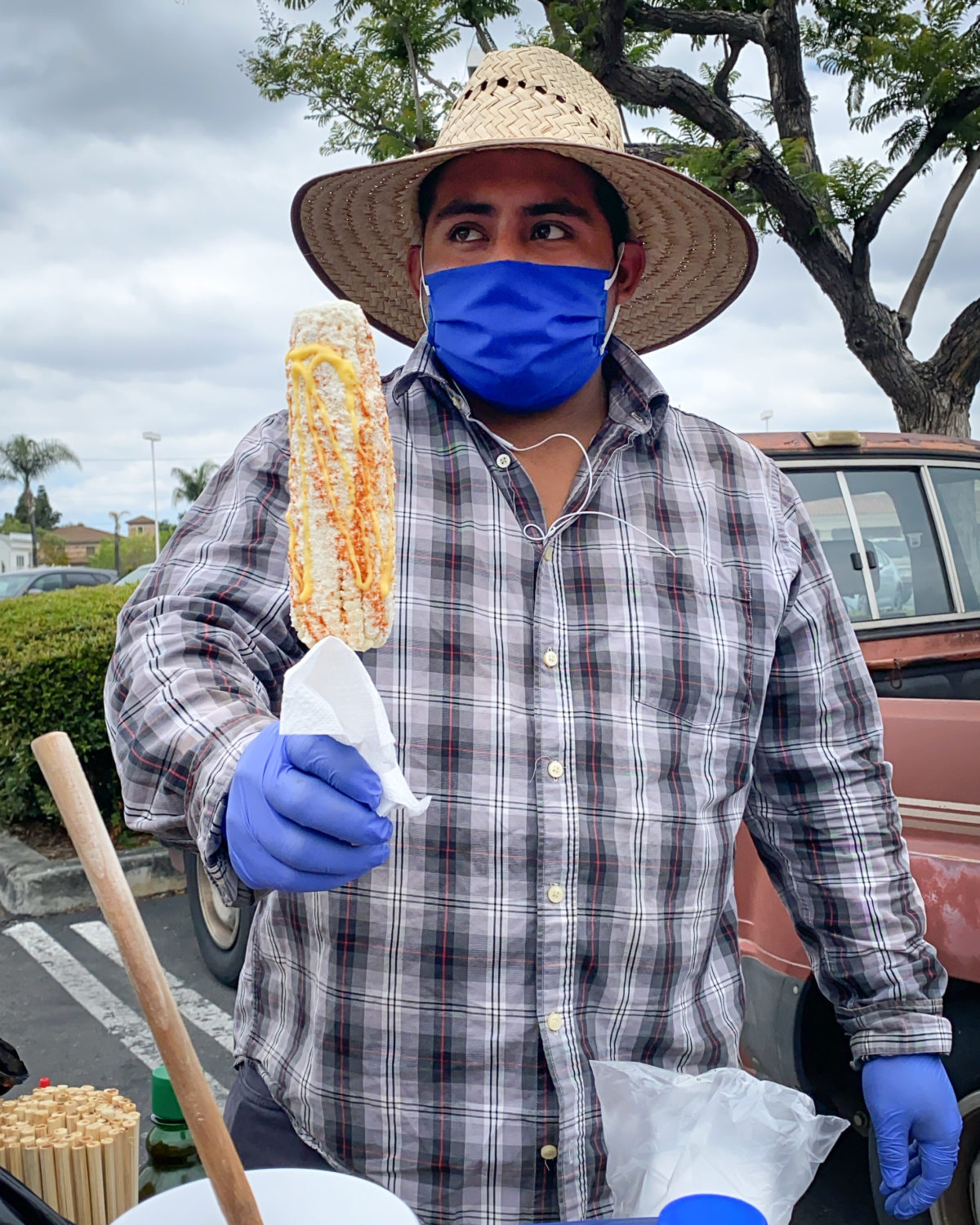
(Photo by Jorge Ortega)
DEMONSTRATIONS SUPPORTING MIGRANT STREET VENDORS
A trend of violence toward migrant sidewalk food vendors emerged in 2020 — particularly in areas with large immigrant populations, such as L.A, which sparked protest in the Latino community. Several cases found these sellers robbed, beaten and in some instances even killed.
“It’s nothing new to me,” said Mario “Scar” Ponce, best known for the “Cholos Try” YouTube series. “All this stuff on social media they keep showing about street vendors being harassed, getting bullied, it’s nothing new. Now we have cameras, so everybody gets to see what’s going on in today’s world.”
A June 30 incident in Long Beach saw two armed men beat and rob a 50-year-old street vendor named Bilifo Fernandez, as they then pulled out guns and pointed them at witnesses. The incident was caught by a nearby Ring security camera and authorities are reportedly still searching for the suspects.
These vendor incidents have not always been recorded on video; however, the use of cameras have recently made people more aware that it is happening.
“Scar” Ponce helped organize a Griffith Park hike in support of vendor Aguilar’s Fruit in Hollywood, who he said was being “harassed by the community” in the Hollywood Hills. The video of the hike garnered more than 6 million views through different social media channels and directed attention to the issue of sidewalk vendors being targeted for abuse.
The community action also highlighted immigrant sidewalk vendors and their legal statuses in the U.S. Ponce’s video showed people driving up to the Aguilar’s Fruit stand, calling them “illegal” and continuously asking if they have a license to sell.
With the legalities of sidewalk vending being a point of contention with Los Angeles Public Health, in 2017 Los Angeles legalized sidewalk vending. The L.A. City Council passed the ordinance with an 11-2 vote making the practice legal, but with permits issued by the Board of Public Works.
“We cannot continue to allow an unregulated system that penalizes hardworking, mostly immigrant vendors with possible criminal misdemeanor charges, particularly in the current political environment,” then Councilman Jose Huizar said after the motion passed. “These people are not asking for a handout, they are asking for an opportunity to lift themselves up and provide for their families.”
The council later implemented vending fees, which are $541 as of July 1, 2020, but has yet to decide how its rules would be enforced.
In L.A. and across the state, some, however, have taken enforcement into their own hands. On July 5, a video was posted of a man confronting an elotero who was selling from his cart at Hart Park in Bakersfield. The man, later identified as Davo Larranaga, was recorded by the vendor’s daughter, as Larranaga told the family, “You’re taking food from my daughter’s mouth. Is he paying for a permit? Is he? Yes or no?”
Larranaga operates a Snowie Shaved Ice truck, and when the company heard of the incident they made it clear that Larranaga was not an employee, as they sell to independent contractors. They added that they would be “looking into the agreement of his contract.”
After the incident was posted on social media, South L.A. rapper King Lil G got ahold of the elotero and his family donating $1,800.
“We gotta keep looking out for each other,” King Lil G said on Instagram. “I am very aware that one gesture won’t stop our people from going through this type of nonsense, but at least we are all aware that we have to look out for one another especially when our innocent street vendors are being targeted.”
More and more videos of street vendor incidents were posted online, many ending in violence, but in the case of Kenia Barragan, she posted a video of a southern California tamale vendor, who she approached and gave $50 to. The 94-year-old man named Jose Villa erupted in tears, as the gesture was overwhelming to him. Barragan then created a GoFundMe in support of the man, raising more than $80,000 as of this writing.
“… He’s 94 years old and uses a wheelchair to get around,” Barragan wrote in the fundraiser’s description. “He can barely afford to buy his coffee and bread in the morning to eat, and doesn’t have money to pay for a phone, let alone his medication. I gave him my number and told him to call me whenever he needs anything… this breaks my heart.”
https://www.instagram.com/p/CCRiLHyDKmS/?utm_source=ig_embed
Sidewalk food vendors have become part of Los Angeles culture over the years, as you roam the streets of South L.A., East L.A., downtown L.A., and many cities in the county, you can find a food cart on any given corner. Communities have rallied around them, but only time will tell if the violent incidents will stop.
“You can’t have a neighborhood without the street vendor,” concluded “Scar” Ponce. “Just come out and support your local street vendor… just know that you’re doing something good in your heart.”
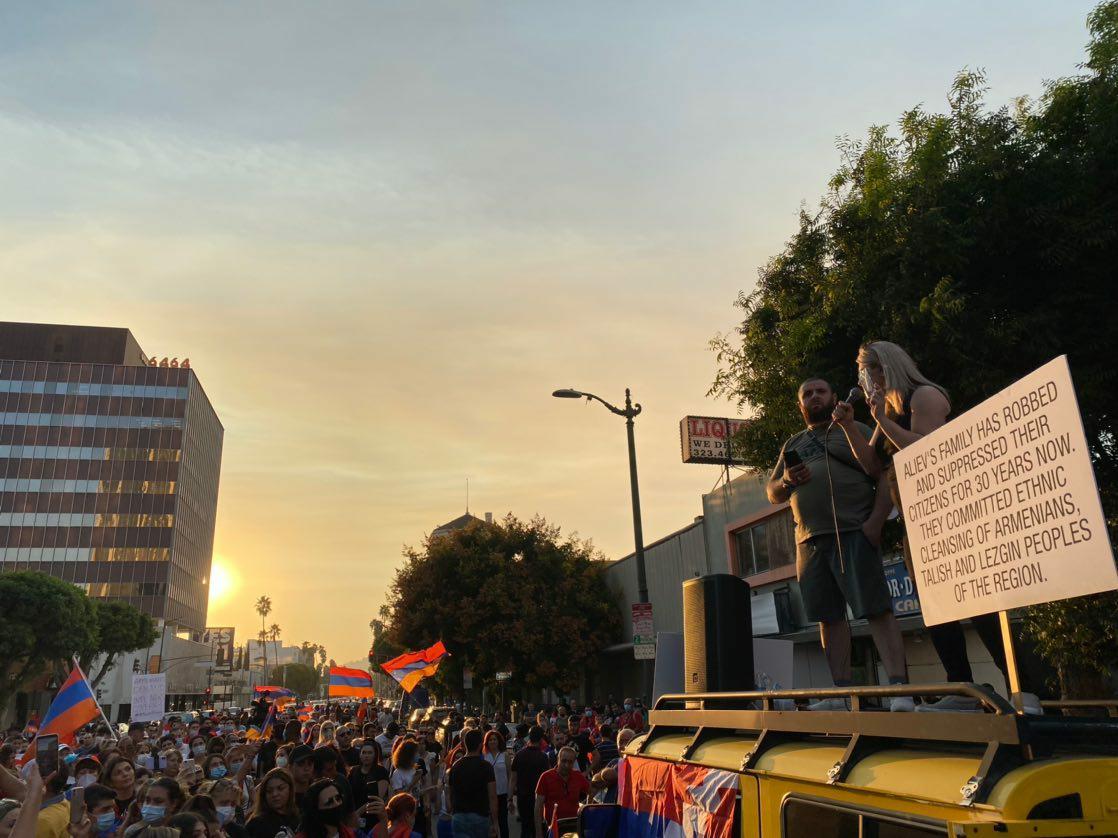
Hundreds gathered in Hollywood to protest conflict in Armenia (Photo by Vahe Kallibjian)
ARMENIAN PROTESTS
Hundreds gathered in Hollywood in early October, protesting conflict between Armenia and Azerbaijan.
Waving Armenian flags and holding signs that read, “Condemn Turkey and Azerbaijan,” “Stop Azerbaijan aggression” and “Armenia wants peace,” the protesters made their way toward CNN’s Hollywood offices with calls for more national coverage of the military fighting in the Nagorno-Karabakh region.
“Our protesting isn’t for money or aid to our country,” Protester Vahe Kallibjian said of the marching. “It’s for the media to take off their blinders and do their job by national and international coverage of a modern day Genocide the Turks are trying to continue from a century ago.”
In the afternoon hours, several protesters made their way onto the 101 freeway, stopping traffic on both sides. At that point, the protest was declared an “unlawful assembly” as California Highway Patrol worked to get people off the roads and get traffic moving.
Los Angeles mayor Eric Garcetti addressed the protesters on Sunday, saying:
“L.A. is proud to be home to the largest Armenian diaspora. We stand with the people of Armenia. I urge our leaders in Washington to conduct the sustained and rigorous diplomacy necessary to bring peace to the Artsakh region. Turkey must disengage.”
On September 27, the Minister of Defense of the Republic of Artsakh, Jalal Harutyunyan, gave notice about Azerbaijani army attacks on Armenian forces in Artsakh, which led to back-and-forth attacks for many weeks.
Armenia’s Press secretary of the Minister of Defense, Shushan Stepanyan also confirmed the attacks through a Facebook update, saying, “The opponent started an air and rocket attack in the direction of Artsakh,” and later said that Turkish planes were involved in the attacks.
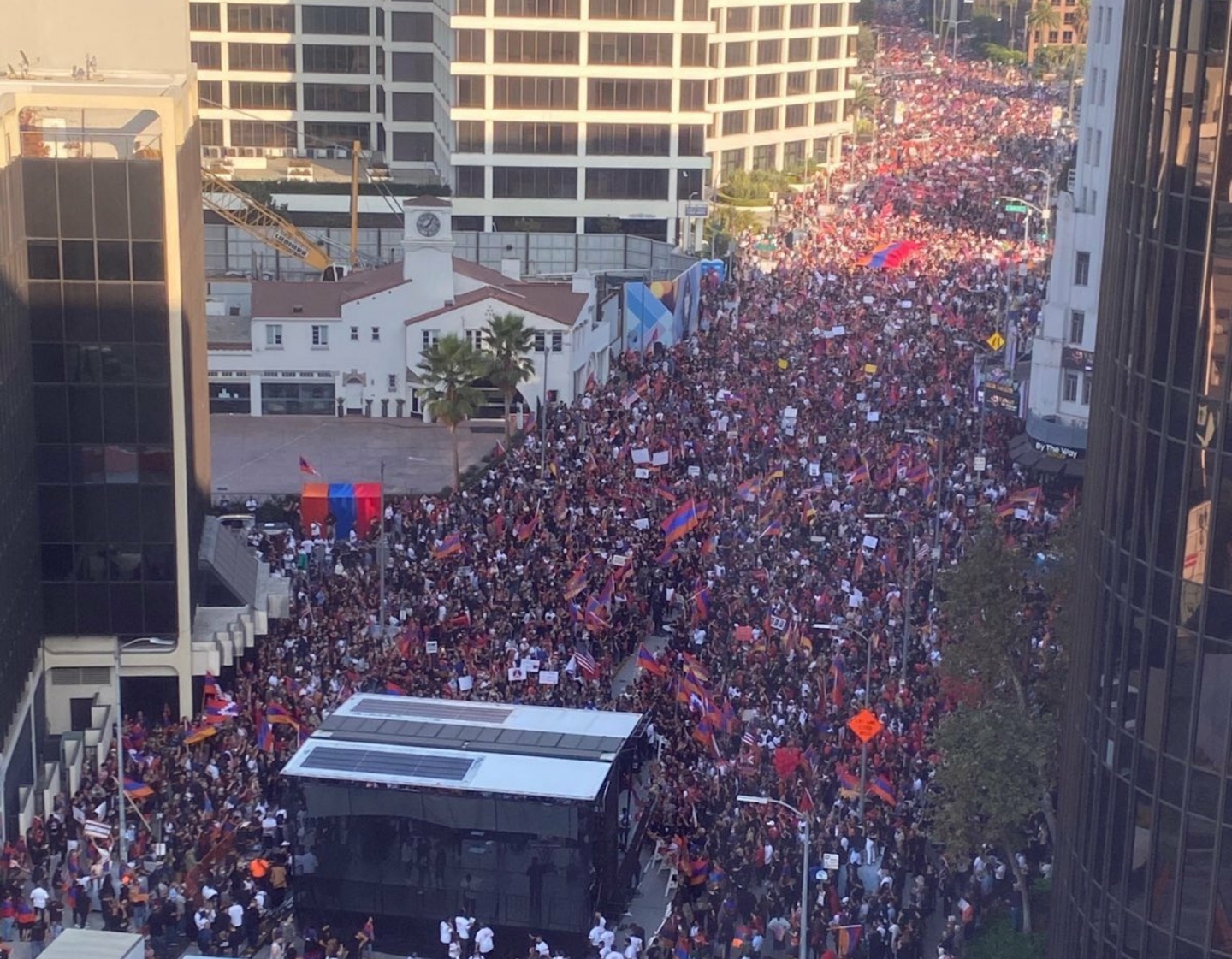
Thousands in downtown L.A. protest the conflict between Armenia and Azerbaijan.
(Photo courtesy of LAPD)
A week prior to the attacks, the Azerbaijani Foreign Ministry put out a statement claiming that Armenian forces killed a Azerbaijani soldier at the Armenian border on September 21.
“Today, the Armenian armed forces undertook another provocation in the direction of the Tovuz region of Azerbaijan,” the Azerbaijani Foreign Ministry said. “As a result of the fire opened by the enemy, a soldier of the Azerbaijani army Mammadov Elshan Ali Oglu was killed.”
Stepanyan, denied the Azerbaijani claims, saying the Armenian side had no information about a killed soldier.
“Turkey and Azerbaijan are pursuing not only military-political goals,” Nikol Pashinian said on Saturday. “Their goal is Armenia, their goal is continuation of the genocide of Armenians.”
A ceasefire was agreed upon November 9, although there have been reports of the agreement being breached in December.
THE TRAGIC LOSS OF KOBE BRYANT
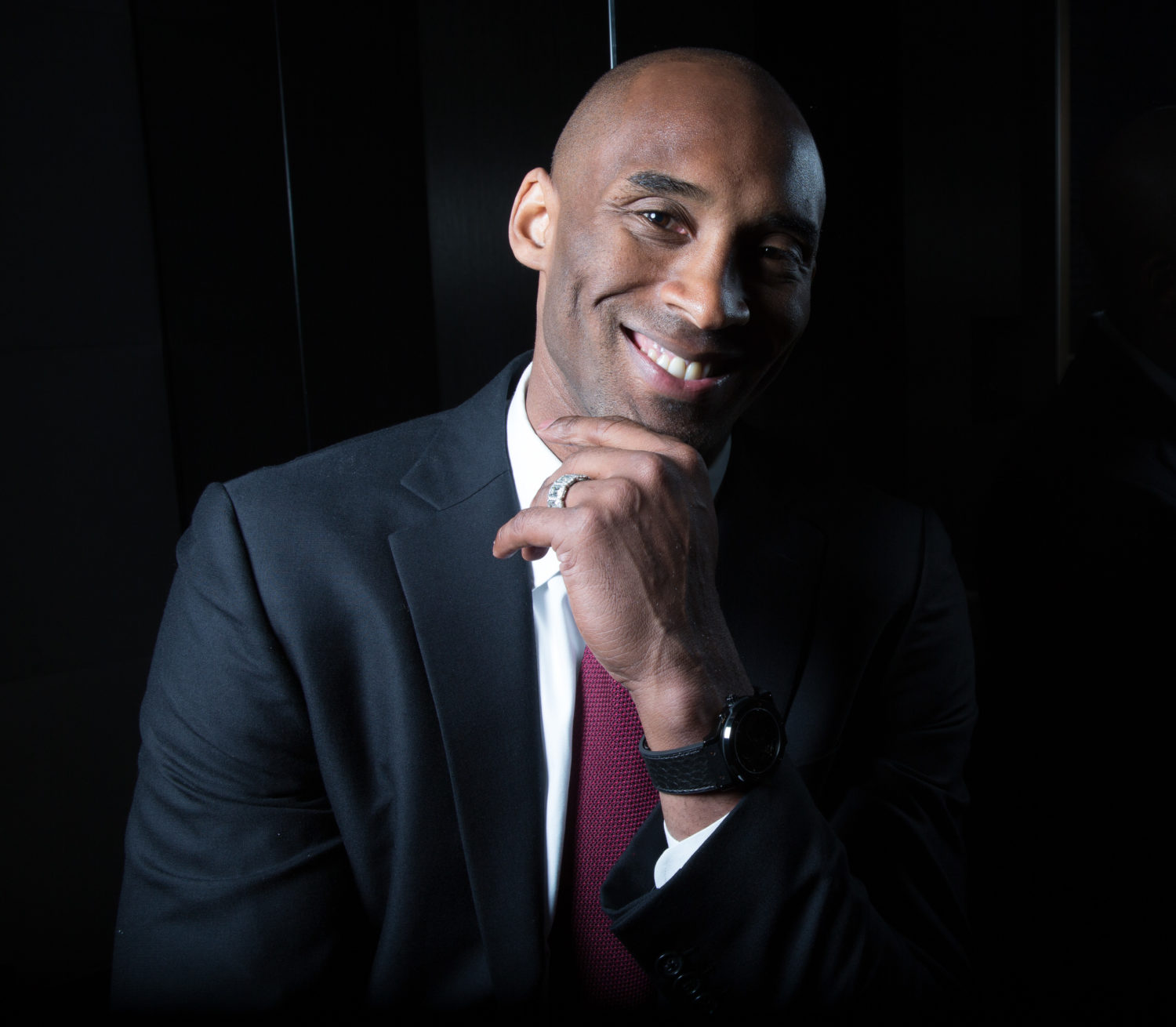
Kobe Bryant (Chelsea Lauren/WWD/Shutterstock)
With 2020 not even a month old, the city of Los Angeles lost one of its most beloved figures in Laker legend Kobe Bryant on January 26.
At 41-years-old, the five-time NBA champion, his daughter Gianna Bryant, 13, and seven other passengers were on their way to the Mamba Sports Academy in Thousand Oaks via helicopter before a fatal crash took place in the Santa Monica Mountains.
The National Transportation Safety Board has been investigating the helicopter’s crash and acknowledged that the foggy weather could have played a part in the accident. Witnesses told the NTSB that they saw the helicopter drifting in and out of the fog, while security video obtained at the 101 Freeway showed a helicopter disappearing into the clouds.
As the news spread, the sports world was in shock, with some of Bryant’s closest confidants, such as Laker legend Shaquille O’Neal, expressing their disbelief.
“There’s no words to express the pain I’m going through with this tragedy of losing my niece Gigi & my brother @kobebryant I love u and u will be missed,” O’Neal said in a tweet. “IM SICK RIGHT NOW.”
For several days after Kobe’s passing, Staples Center and L.A. Live allowed fans to gather in remembrance of Bryant, as flowers, photos, sneakers, basketballs, teddy bears, hand-written notes, and Kobe Bryant memorabilia adorned the area as far as the eye could see.
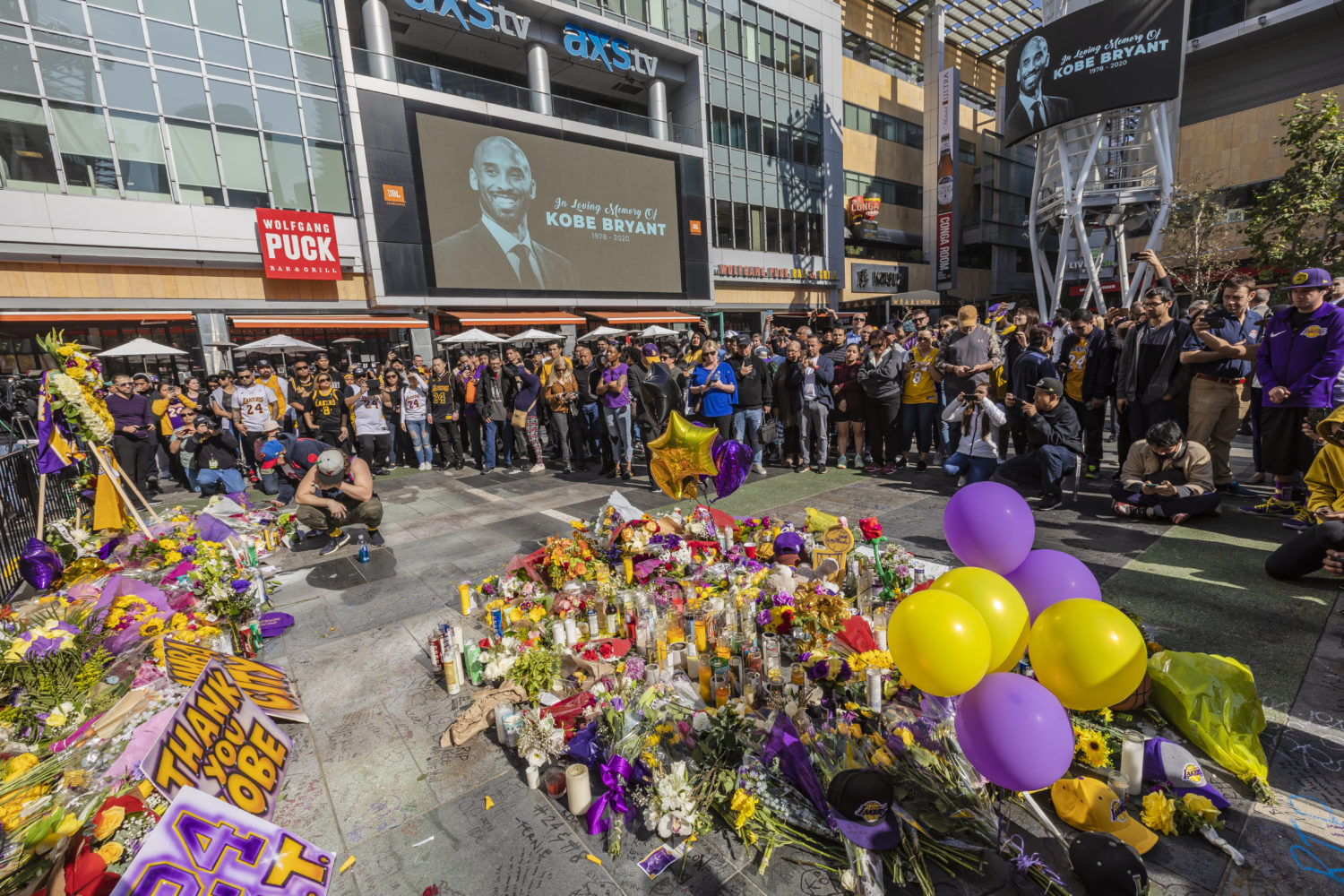
Fans of Kobe Bryant gather at L.A. Live to mourn the passing of Kobe and his daughter Gigi Bryant who both died in a helicopter crash in Calabasas, CA. 1/27/2020
(Photo by Ted Soqui)
Huddled in circles, several fans chanted “Kobe” and “Gigi,” while others quietly observed the mementos that surrounded the L.A. Live makeshift memorial.
Los Angeles City Hall was lit purple in Bryant’s honor, while several skyscraper buildings in the city did the same. The L.A. City Council even proposed renaming part of Figueroa St. in downtown L.A. “Kobe Bryant Boulevard.”
Bryant is survived by his wife, Vanessa Bryant and three other daughters — Natalia, Bianca and Capri.
CITY OF CHAMPIONS
While 2020 brought Los Angeles a lot of struggles and strife in the form of a pandemic, a thread of normalcy was provided by sports, as not only did the Los Angeles Lakers capture their 17th NBA Championship, but the Los Angeles Dodgers won their first World Series title since 1988.
The championships were unique in the sense that they were both won during the pandemic, at a time when professional sports were shut down around the world, and it was not clear if games could be safely played.
The NBA shut down its season in March, after Utah Jazz player Rudy Gobert infamously joked about the virus, touching all of the reporters microphones and testing positive for COVID-19 days later.
The Gobert incident was a wakeup call for many Americans, as the Coronavirus was widely believed to be an overseas issue. But when an outbreak shut down the entire NBA, it was an early indication of things to come.
The league did not restart until July 30, as the NBA invested $190 million to isolate the league from the outside world, in what is now known as the “NBA Bubble” inside of Disney World in Florida.
In this bubble, the teams, coaches and personnel were tested frequently and did not record a single case of COVID-19 throughout the season.
With basketball games resuming, in a vastly different environment, the Lakers were able to defeat the Portland Trailblazers, Houston Rockets, Denver Nuggets and ultimately, the Miami Heat in the NBA Finals to secure the franchise’s 17th championship. LeBron James earned his fourth NBA title and Finals MVP award.
The Dodgers and Major League Baseball handled their season differently than the NBA, not only shortening the season to 60 games instead of the usual 162, but allowing for travel between states.
The MLB’s experience did not go as smoothly as the NBA’s, having several outbreaks lead to game postponements, but they managed to play all the scheduled games and end the season as it usually would at the end of October.
The Dodgers thrived in the pandemic-shortened season, finishing with a 43-17 regular season record before beating the Milwaukee Brewers in a two-game Wild Card series, making quick work of the rival San Diego Padres and edging out a tough series against the Atlanta Braves before making their way to the World Series.
This was the Dodgers’ third World Series appearance in the last four years, and while luck did not fall their way in previous seasons, they finally pulled it off against the Tampa Bay Rays, on the backs of World Series MVP Corey Seager and longtime pitcher Clayton Kershaw.
HISTORIC WILDFIRE SEASON
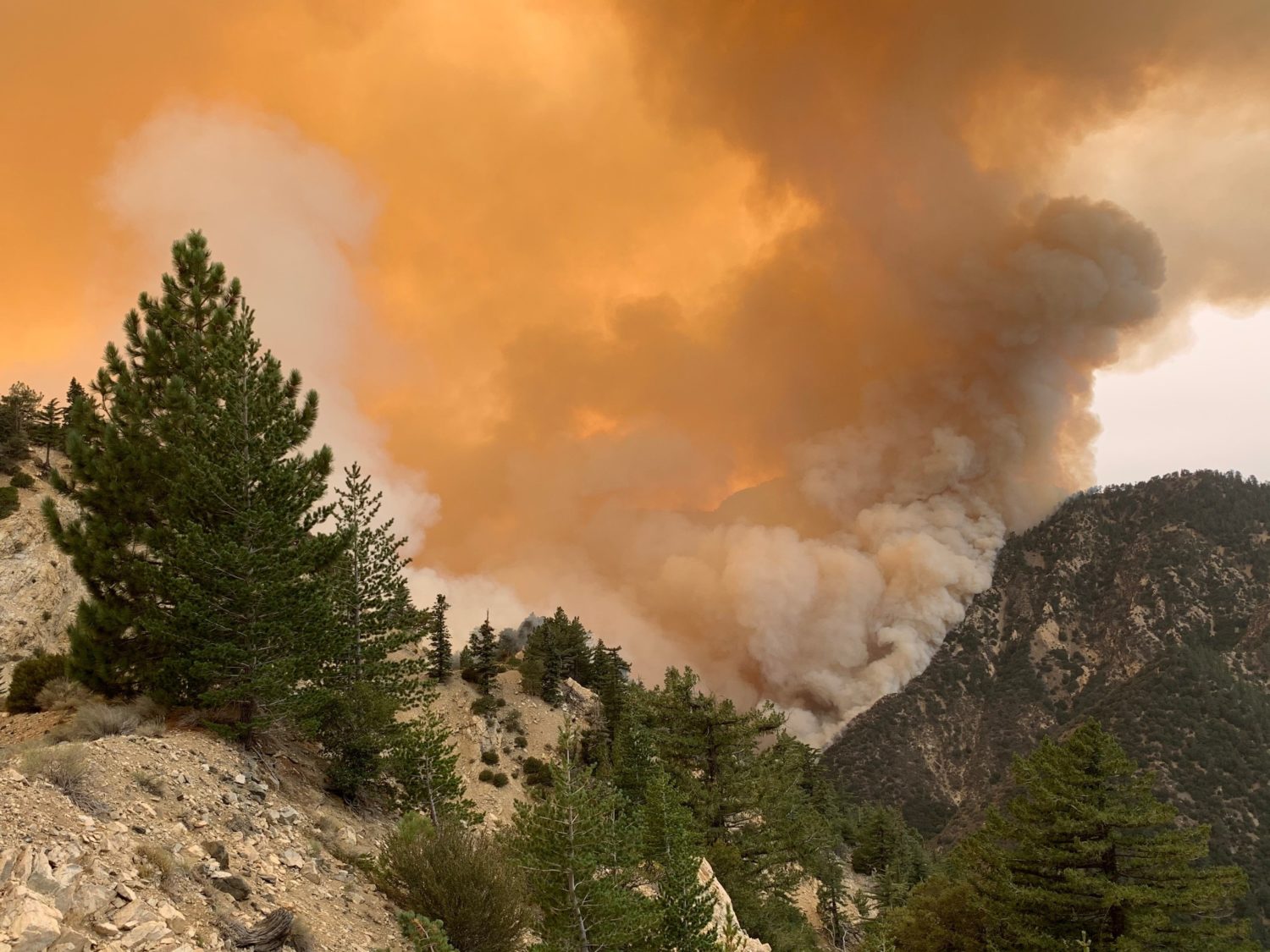
The Bobcat Fire in the Angeles National Forest burned through more than 115,000 acres. (Photo by Ted Dunfee)
Between record-breaking heat that Gov. Gavin Newsom attributed to climate change and lightning strikes sparking fires within forest brush, more than 4 million acres of California land burned in 2020, including the state’s first “Gigafire.”
Los Angeles County battled the Bobcat Fire that burned through 115,796 acres of the Angeles National Forest and destroyed 87 homes. The blaze began on September 6 and reached full containment on December 18, but not before the months-long battle saw as many as 1,600 personnel joining the fight.
The Bobcat Fire started near Azusa and L.A. County Sheriffs said the fire moved quickly, burning through more than 1,800 acres on its first day.
As the Bobcat Fire continued to push through terrain in the San Gabriel Valley, it remained at zero percent containment for five consecutive days. In that span, foothill communities in Duarte, Bradbury, Monrovia, Arcadia, Sierra Madre, Pasadena and Altadena were all given evacuation warnings, being asked to have evacuation plans in place with emergency supplies and personal belongings packed. Those evacuation orders were eventually lifted as crews were able to corral the fire before reaching the San Gabriel Valley homes.
Los Angeles Mayor Eric Garcetti spoke on the record-breaking fire season, saying, “The climate crisis isn’t some far off threat — it’s here at our doorstep. How we rise to confront it will determine our very survival.”
Fears of the Santa Ana winds pushing the fire closer to communities never materialized, as the winds instead pushed the fire north, helping fire crews along the way.
By September 11, fire crews consisting of more than 500 personnel, using 50 engines, two aircrafts, five dozers and five water tenders brought the fire to 6 percent containment, a number that stood for four days and eventually went down to 3 percent as the fire “outpaced containment,” according to the Angeles National Forest.
Thick smoke from the Bobcat Fire billowed down throughout the county, forcing a smoke advisory that declared the air quality unhealthy and in some cities, hazardous. L.A. County residents were asked to avoid outdoor activities, especially for children, older adults and sensitive groups.
“It is difficult to tell where smoke, ash or soot from a fire will go, or how winds will affect the level of these particles in the air, so we ask everyone to remember that smoke and ash can be harmful to health, even for people who are healthy,” Muntu Davis, Health Officer for Los Angeles County said. “If you can see smoke, soot or ash, or you can smell smoke, pay attention to your immediate environment and take precautions to safeguard your health.”
The Bobcat Fire was part of a record-breaking 4 million acres that burned throughout California this fire season. In comparison, 118,000 acres had burned in California in the same timespan in 2019.
“This is the largest fire season in terms of total acreage impacted we’ve had in some time,” Gov. Gavin Newsom said. “You put it in comparison terms … to last year, it’s rather extraordinary, the challenge that we’ve faced so far this season.”
The source of the Bobcat Fire is still being investigated by the U.S. Forest Service, and Southern California Edison told L.A. Weekly it is conducting its own investigation to see if nearby utility equipment could have been compromised in the area of the fire’s starting point.
Edison is working with federal investigators and has turned in the equipment in question.
Outside of L.A. County, Northern California experienced the largest fire in California history, as the August Complex Fire burned 1,032,648 acres, becoming the first “Gigafire” in modern history. The fire burned for nearly three months and was ignited by lightning strikes on August 16, according to CAL Fire.
“If that’s not proof point, testament, to climate change, then I don’t know what is,” Newsom said of the million-acre fire.
After California recorded its highest temperature of all time at 137 degrees in Death Valley this August, and Los Angeles County felt a record high temperature of 121 degrees on September 6 in Woodland Hills, Newsom reiterated his ongoing sentiment that climate change is “self-evident.”
President Donald Trump visited California on September 14 in order to assess the fire season himself. In a meeting to discuss the fires, Newsom looked to find “an area of commonality” with the president, as Trump said he believed the culprit was vegetation management, not climate change. California Secretary for Natural Resources, Wade Crowfoot, emphasized that the science of climate change cannot be ignored, to which Trump responded, “It’ll start getting cooler. You just watch.” Crowfoot then responded with, “I wish the science agreed with you,” to which Trump said, “I don’t think science knows, actually.”
Despite the differing opinions, Newsom continued that California needed more federal help, with 57 percent of California being federal forest land, to which President Trump said, “I’m all for it. That’s something I feel strongly about.”
“We really need that support,” Newsom said to Trump. “We need that emphasis of engagement and we are fully committed to working with you to advance that cause.”
In October, the Trump administration denied federal aid toward six of the larger fires that burned through California, but then later granted the help after Gov. Gavin Newsom spoke with President Trump directly.
JOE BIDEN WINS PRESIDENTIAL ELECTION
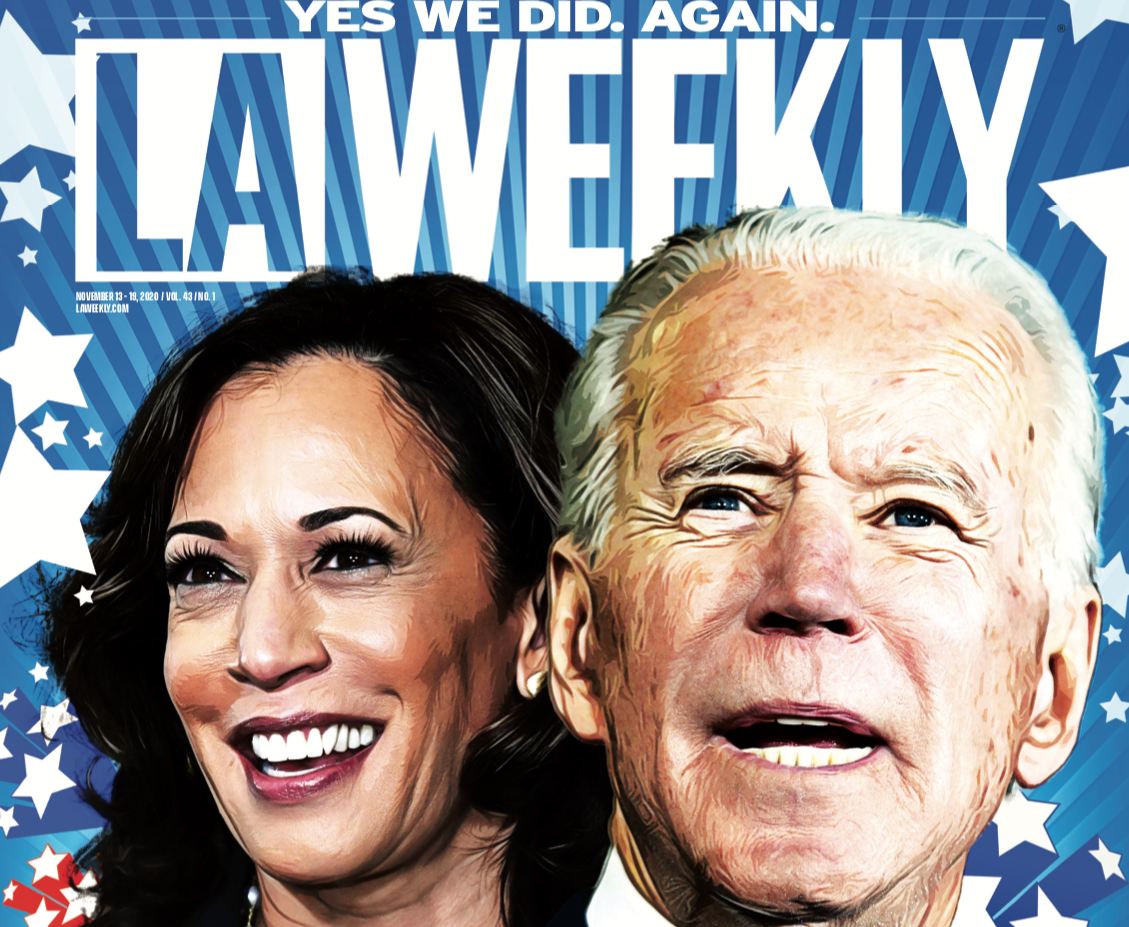
The 2020 U.S. presidential election saw the most votes cast in history, with president-elect Joe Biden not only receiving 306 electoral votes, but a record high 81,283,098, to President Donald Trump’s 74,222,957.
As of this writing, President Trump continues to contest the election results, going as far as calling out Republican colleagues for acknowledging president-elect Biden’s victory.
“Time for Republican Senators to step up and fight for the Presidency, like the Democrats would do if they had actually won,” Trump said in a December 26 tweet. “The proof is irrefutable! Massive late night mail-in ballot drops in swing states, stuffing the ballot boxes (on video), double voters, dead voters.”
Trump attempted multiple lawsuits against Pennsylvania, Georgia, Wisconsin and Michigan, with Texas Attorney General Ken Paxton attempting to sue those states as well, in support of Trump. The lawsuits did not move forward, with the U.S. Supreme Court rejecting Paxton’s attempt, as well.
The disputes were not resolved by December 14 and the electoral college cast its votes, with Biden becoming the 46th president of the United States, and U.S. Senator Kamala Harris of California being the first Black and South Asian woman to hold the vice presidency.
After the electoral college confirmed Biden, he echoed Trump’s 2016 words of the election being a “landslide victory” for him.
“At the time, President Trump called his electoral college tally a ‘landslide,’” Biden said. “By his own standards, these numbers represented a clear victory, then, and I respectfully suggest they do so now.”
Despite Trump not yet conceding, the transition process has begun for Biden and Harris, who will be sworn in on January 20.
Advertising disclosure: We may receive compensation for some of the links in our stories. Thank you for supporting LA Weekly and our advertisers.

